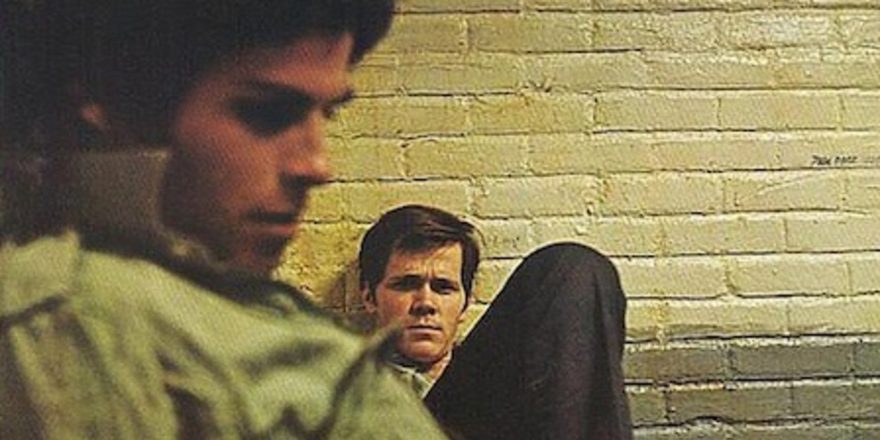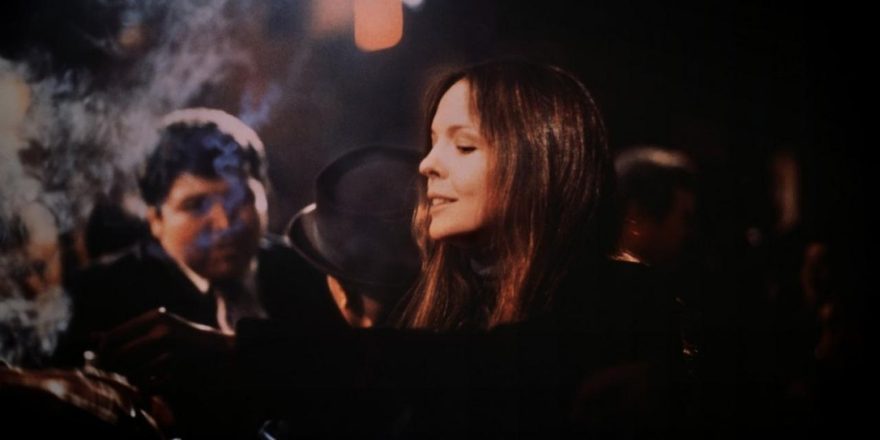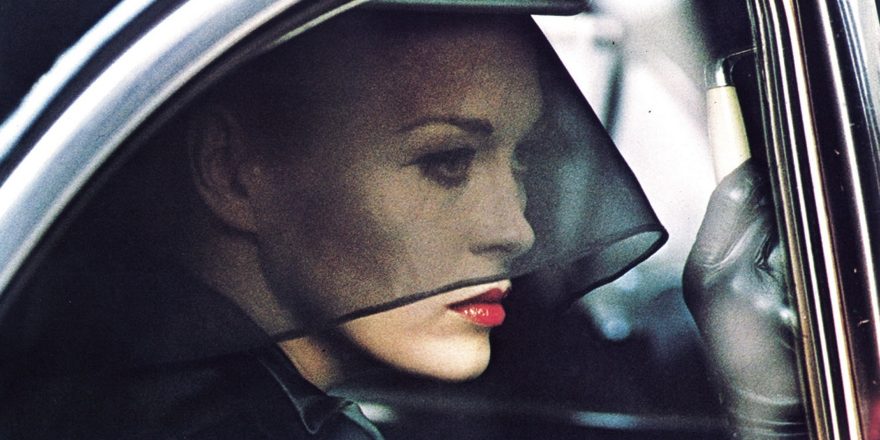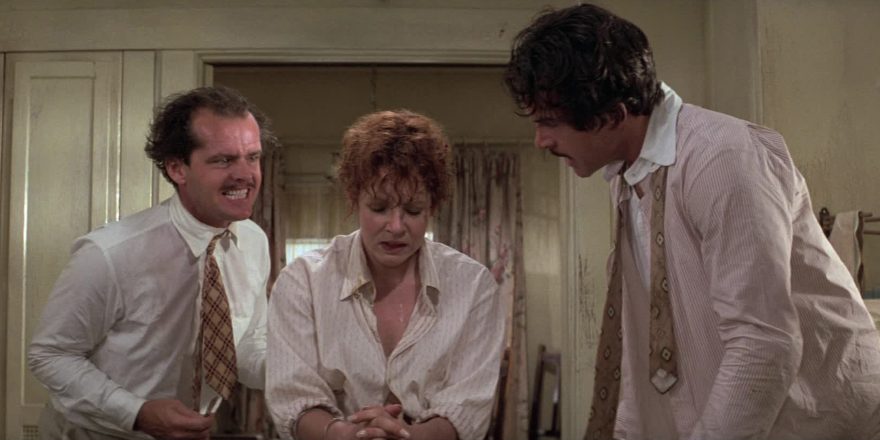Fortune and Men’s Eyes may well be considered Canada’s very own The Boys in the Band, which is no small claim to fame. While Mart Crowley’s devastating play about “pre-liberation” gays in New York City, first produced off-Broadway in 1968, remains the Holy Bible of self-loathing, glamorous, and inestimably campy homosexuals, Frank Herbert’s Fortune and Men’s Eyes, first produced off-Broadway in 1967, about gay life in prison, holds its own with its acerbic dialogue, (homo)sexual frankness and melodramatic brio. In fact, as a piece of theatre, Fortune and Men’s Eyes is probably even more renowned than The Boys in the Band, remaining the most published Canadian play, translated into 40 languages and produced in over a hundred countries (including an infamous production directed by Sal Mineo and starring his future roommate, Don Johnson, as Smitty, at the Coronet Theater in Los Angeles in 1969).
The Boys in the Band made it to the screen first, as the brilliant, inventively directed William Friedkin film, released in 1970; Fortune and Men’s Eyes, with much less fanfare, became a movie a year later, directed by Toronto’s own Harvey Hart (along with fellow Torontonian Sydney J. Furie, one of my favorite Canadian journeymen directors – he did, after all, direct Faye Dunaway in the genius made-for-TV movie Beverly Hills Madam in 1986!). Made with a much smaller budget, Hart’s Fortune and Men’s Eyes, with its lurid scenes of prison rape and racy dialogue, was pretty much considered a B-movie upon its release, but it stands up today as a groundbreaking film about homosexual desire, criminality, and domination and submission in the gay world. (The prison setting is almost incidental: it could have as easily been set in any gay bar or sauna of the time.) As a document of queer life before assimilation, it deserves to be included in the pantheon of pioneering queer cinema.
The story of playwright John Herbert would itself be fodder for an interesting film. While working in Toronto in the advertising department of Eaton’s (Canada’s answer to Macy’s), Herbert was in 1947 accosted by robbers while dressed as a woman, and when the police arrived, accused of soliciting his assailants for sex. Under Canada’s same-sex sexual activity law, on the books until 1969, he was sentenced to several months in an all-male youth reformatory – presumably the perfect setting to curb one’s homosexual impulses. From this experience, Herbert created the autobiographical character of Queenie, one of the most vitriolic, incendiary and rebellious queens ever devised. Actor Michael Greer played the role in the aforementioned Sal Mineo production in 1969 to such acclaim that he was tapped to reprise the role in the film version. As an intriguing side note, after the controversial play was initially unable to be produced in Canada, it was sent to a producer in New York and eventually ended up in the hands of Dustin Hoffman at the New York Actors Studio in 1966, where it was workshopped with Hoffman in the role of Rocky and Jon Voight as Smitty. It’s not difficult to imagine the pair of actors using this experience to play their not unsimilar roles so convincingly in John Schlesinger’s Midnight Cowboy three years later.
When straight men are segregated from women, it’s pretty much a truism that any hole will do. You may not have been born that way, but that’s how you end up.The film version of Fortune and Men’s Eyes starts out with the character of Smitty, played by Wendell Burton (who had just come off his screen debut opposite Liza Minnelli in Alan J. Pakula’s excellent The Sterile Cuckoo), arriving at a prison to serve a six-month sentence for marijuana possession. The long-lens shots of the distraught Smitty of the opening credit sequence, accompanied by Ronnie Dyson singing the Shakespearean sonnet to which the play owes its title, set the unexpected romantic tone of the film. We are quickly introduced to Smitty’s cellmates: Rocky, a slow-burning, gay-for-pay hustler; Mona, a feckless and frail Jewish boy who has been sexually exploited by all and sundry; and, of course, Queenie, the balls-to-the-wall drag queen without a heart of gold. If the characters seem like stereotypes, they are, but purposeful ones, carefully designed to illustrate the various permutations of queer identity at the time. Queenie and Rocky dominate Mona to the point of servility, even as they spar and cock fight each other with animalistic territoriality. When the naïve and presumably straight Smitty, who immediately tapes photos of his girlfriend over his bunk, enters the mix, the power dynamics shift, with violent and disturbing consequences.
The normal Smitty may be the main figure of identification for the audience, but it’s Queenie’s show all the way. As Herbert’s character of authorial self-assertion, Queenie is remarkably unsympathetic, a far cry from, say, William Hurt’s sensitive trans character, Luis, in Kiss of the Spider Woman, a later gay iteration of the same prison themes. A cross between Dr. Frank-N-Furter in Rocky Horror and Helmut Berger in The Damned, Queenie has a sheer ferocity and outrageousness that wins us over. We first meet her in her capacity as a trustee, rolling her cart down the aisles to dish out the prisoners’ commissary requests. She also dishes out a series of tart one-liners: “Cigars, cigarettes, dildos!” Her quips and retorts are right out of The Queen’s Vernacular, providing us with enough Queenie-isms for a lifetime. “I’ll be back in the morning with a prune douche,” she promises the prison doctor. When Rocky asks her, “How come you’re so smart for a homosexual?” Queenie acidly responds, “How come you’re so dumb for a faggot?” When Rocky protests too much that he’s not a faggot, proclaiming, “My shovel’s clean,” Queenie deadpans, “Oh I don’t see how, dear. Every time you get in the shower you’ve got it up someone’s ditch.” Lines like “Syphilis, who’s she? Any relation to Gonorrita?” and “Merci Beaucooze” may not be quite up to the droll standards of The Boys in the Band, but that’s because these characters are working class and streetwise, not the upper-middle-class sophisticates of the West Village. Although Queenie does compete with the movie references, saying of her blond tresses: “I’ve been using laundry bleach, are you ready? It’s doing a Fanny Skeffington number on my head.”
The bulk of the story concerns Rocky trying to make Smitty his prison punk, offering protection in exchange for regular pillow-biting and soap-dropping. Smitty, witnessing how other inmates are brutally gang-raped, succumbs to Rocky at first, but eventually asserts his own authority, beating up the tough hustler and taking Mona as his own bitch in the end, a classic case of the oppressed becoming the oppressor. But it’s the treatment of the initial rape of Smitty that causes so much consternation amongst certain critics. Shot largely in close-ups, and with an abundance of authentic sexual tension, the film doesn’t bow to the usual canard that rape is only about power, and not also a sexual act, as morally reprehensible as it is. The brilliant shot of the shirtless and buff Rocky walking backwards away from Smitty as he turns on the sink faucets one by one to drown out Smitty’s cries for help, and the subsequent tracking shot of the faucets going toward the shower as Smitty is being raped, ending with the characters in the frame after the violation is over, is much more powerful and effective than any graphic treatment of the act would be. It’s pure cinema, pornographic and artistic in equal measure.
After Smitty submits to Rocky, Queenie interrupts his second attempt to fuck the boy in the shower, creating a diversion to alert a prison guard. “All right, I want to know what you all have been doing while Mother was out shopping,” she shrills, articulating the Freudian “Family Romance” aspect of prison life: the role-playing of sexual tensions within the nuclear family. And by the way, if everyone in prison in Fortune and Men’s Eyes seems gay, it’s because they are – or at least they’re homosexual in some regard. When straight men are segregated from women, it’s pretty much a truism that any hole will do. You may not have been born that way, but that’s how you end up.
Queenie, all rage and sarcasm, has a field day trying to urge the downtrodden Smitty to rebel against Rocky. “You got to stop living in sin, kids,” she says to the two of them, “Legalize it! So you can have 14 babies, retarded.” The specter of marriage and children to gays in the pre-liberation era was, of course, akin to the worst fate imaginable for a homosexual. Marriage was the institution that every gay worth his salt was escaping in order to enjoy a homosexual existence. Queenie relentlessly continues: “I’m not jealous, Rocky. I’m really not. But I do hate to see a nice guy playing pussy to a third-rate hustler.” Finally, Queenie goads Smitty into turning the tables on Rocky, encouraging him to “Pearl Harbor the prick” by beating him up in the shower and, inevitably, asserting his masculine authority over the woebegone Mona, who masochistically recites the titular sonnet to him. Prison, as it turns out, is simply a metaphor for the complex relations of homosexuals trying to exist in a culture that despises them; it was the very acting out against the dominant culture that forged the movement for liberation in the first place. In fact, it used to be all the rage.







